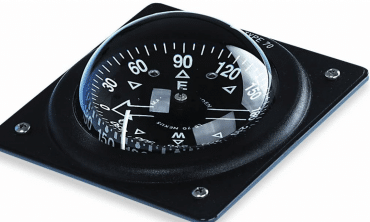We all know something about compasses from our primary education course. From our daily lives, we know that compasses are suitable not only for adventurers but also for hikers, camping enthusiasts, military services, and other occupations and activities that require you to find your way in some large, tangled areas. Indeed, the compass is a great tool that can lead you through any terrain, even if you do not remember the exact path you came to the given point.
There exist several types of compasses that are used by various travelers and services available on the market. If you’re looking for a compass that will be accurate and easy to use, you need to know what are the essential compass features and how it works. In general, it uses the Earth’s magnetic poles and shows the direction with a magnetized pointer. Hence, you need to know on which side of the world your starting point and destination are located in order to find your way using your compass.
In this article, you will find out how to use compasses, their mechanism of functioning, and how to find paths, along with some tips on their usage. Stay tuned if you are planning a trip and do not want to be lost somewhere in an unknown area!
Best Compass Top Picks
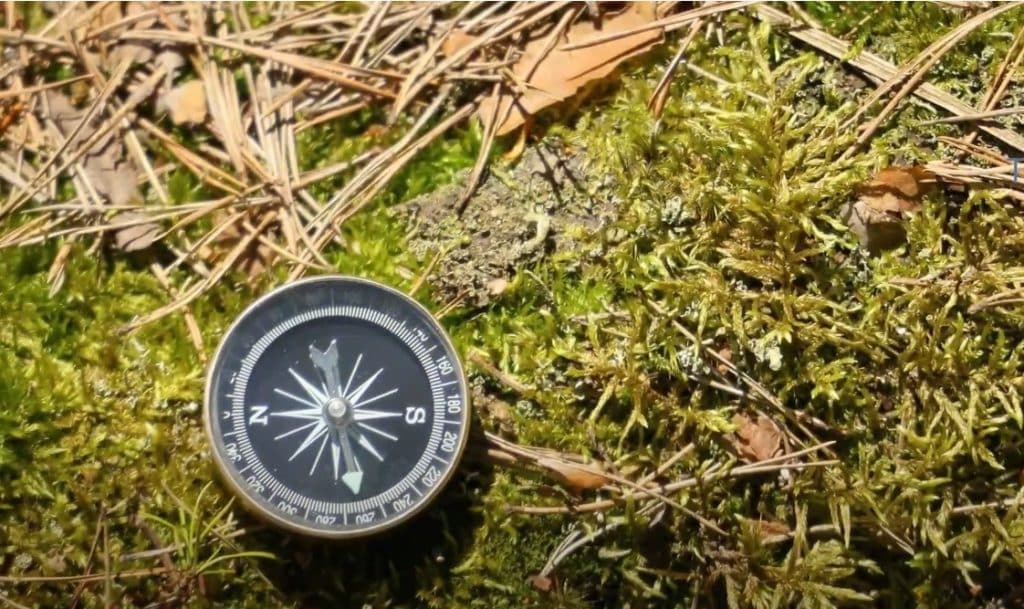
- availability on the market;
- high quality of the materials;
- durability;
- warranty from the producer;
- the simplicity of usage;
- lightweight design, etc.
If you also find these features appropriate, you can indeed count on the given list that allows you to choose the compass that is the best for your purposes. Proceed below so you can find the nine best compasses for use in both underwater and land navigation.
1. The Best Compass Overall – Cammenga
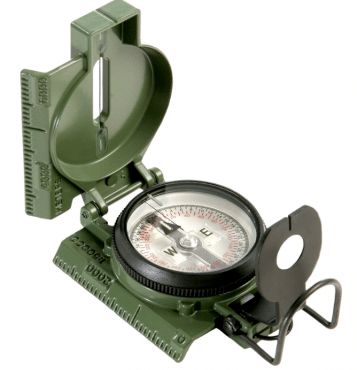
What is more important, Cammenga lensatic compass can be used in any temperature and weather conditions with equal precision levels. It is that type of compass that will withstand any damage remaining absolutely exact about identifying the magnetic poles.
Now, about comfort: Cammenga compasses are easy to use at night thanks to microlights placed on the arrows and indicators and can lock azimuth when needed. It is also effortless to navigate through even after the very first time the compass got in your hands.
Hence, if you want to use a compass that is reliable and easy to use (unless you consider its weight of 7 ounces), choose a good old Cammenga!
2. The Best Budget Compass – Magnos
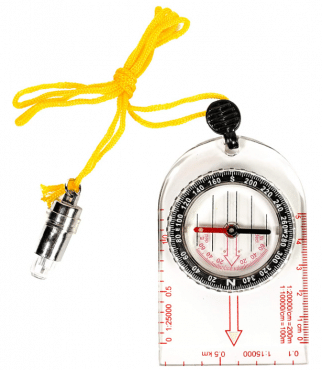
The simple base plate design and transparent plastic used for the main body make it easy to keep the compass right upon the map while searching the directions. Other key features of this compass include a red pointer at the end of the arrows, so you can see the direction even in low light. A perfect addition to all these characteristics is the fixed declination adjustment scale that will help you to determine the difference between the real and magnetic north. There are also two scales of measure (in inches and centimeters) for the convenient comparison of the area on the map.
The Magnos compass comes with a built-in LED light to get your way in the dark. All in all, it is a perfect light and compact compass whose only drawback is its fragility, so consider carrying it carefully. In spite of this nicety, it is one of the most accurate base plate compasses with a highly convenient scale and pointer.
3. The Best Compass for Hiking – the Suunto MC-2
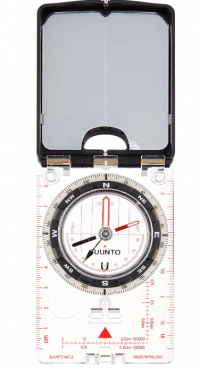
Let us just point out some of the MC-2 key features so you could understand its greatness. First, there is a built-in declination adjustment and a clinometer that allows you to measure the slope of the terrain. Second, the luminous markings on the baseplate and arrows make it possible for you to orient in the dark. Finally, there are precise measurement scales and a sighting hole in the mirror lid so you can perform the most precise land navigation. The sighting mirror of the Suunto MC-2 can be used as an emergency signal on some occasions.
Additionally, this compass is extremely durable thanks to its sturdy lid that prevents the plastic transparent base plate from getting damaged.
For all these reasons, the MC-2 is a perfect compass for hiking or other activities that may imply compass navigation.
4. The Best Value Compass – the Brunton TrueArc
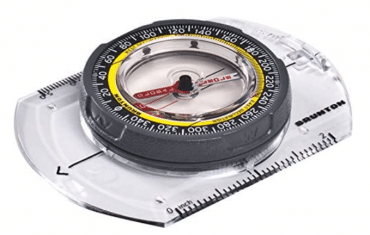
However, the needle lacks luminous ingredients, so the compass cannot really help you in low light conditions. What is more, the measurement scales are only in inches or centimeters, so it will require some effort to calculate the distance on the map. The plastic used as the base is sturdy enough but still is not the best material for maximum durability, so take care.
All in all, it is a great compass for beginners and even for professional users, even though it is unlikely for you to take it on a major adventure.
5. The Best Compass for Survival – the Suunto M-3
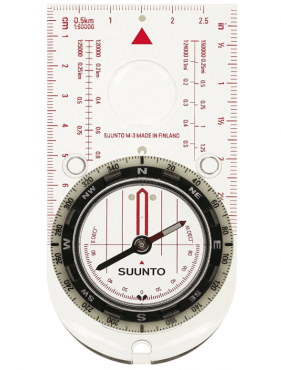
Like all other Suunto compasses, Suunto M-3 is an outstanding model with its durability and compact size, which is a great combination for the compass, especially if you’re going to use it for hiking. What is more, the bezel is adjustable, so you can control it depending on the northern and southern hemispheres or the specifics of the current terrain.
Hence, Suunto M-3 is best for survival as it will not allow you to find your way in the dark, on the complicated terrain, or under any other conditions even after a major hit thanks to the sturdy plastic base.
It will definitely become your best compass, especially if you do not hesitate to spend money on your equipment as the price may be too high for someone.
6. The Best Compass for Underwater Navigation – Oceanic
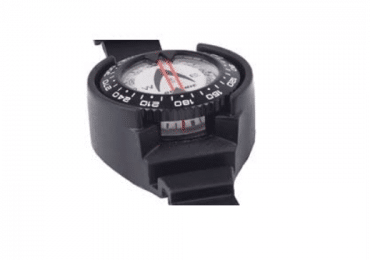
Oceanic Wrist Mount compass is the one rare model that can be safely used by divers. It also means it is possible to keep them worn under any weather conditions, which is a very useful feature for the compass. What is more, the bracelet is believed to be comfortable enough so you will not feel any strain or fatigue. This compass is waterproof, saltwater-resistant, and can withstand great levels of underwater pressure.
The outstanding feature of this compass is the floating card instead of the free-spinning needle, which is the most comfortable option for scuba diving since the mechanism diminishes your extra movements underwater. There is also an internal side window which also helps you to navigate in the dark underwater conditions, so you do not need to waste your time trying to concentrate on finding the needle.
Therefore, Oceanic is best for scuba diving but is very unlikely to fit your hiking trip or any other occasion of land navigation. Therefore, if you want to use the compass in such conditions, you should definitely consider this model.
7. The Best Thumb Compass – Silva Race
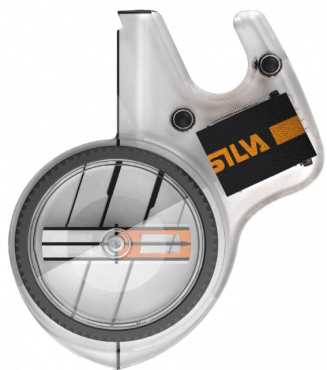
Thumb compasses are that specific type of sports equipment that is set on the thumb leaving the hands free. Silva Race 360 Jet is designed to let you freely use your arms without extra poundage thanks to weighing only one ounce. It is especially important that the stability of this compass is incredibly accurate and lets you obtain ±1 degree precision even while cycling or running. Another advantage for sportsmen is the presence of the 360-degree turnable capsule that traces the time spent on the race with a jet global needle.
The sturdy transparent plastic used in the baseplate lets you clearly see the map and the directions without any visual obstacles along with withstanding any hits and remaining workable in any weather conditions. On the bottom of the baseplate, there is a rubber covering that helps to keep the surface of the compass tight to your thumb and prevents the compass from falling.
Silva Race is the one and only compass for comfortable sports activities allowing you to get the best results in the race without being distracted by considering the needed way. Hence, it is the compass that is a great addition to your gear with no need to determine its relevance.
8. The Best Compass for Marine – the Brunton Dash
And here we come back to Brunton compasses, but this time we will explore the Brunton Dash Mount compass. Like the divine compass, the marine one also uses a stable global needle along with a liquid-floating map that shows the changing direction, so you need to place the compass in a convenient visible position to be able to easily orient. What is more, this compass has a black-and-white scheme with 5-degree graduations for better reading, so if you’re seeking your way on the big waves, no difficulties will occur.
Thanks to these key features, you are able to keep that compass with kayaks and light boats, not only yachts or bigger vessels. Along with mentioned characteristics, this compass with reciprocal azimuth will let you easily find the way back to where you started.
In general, the Brunton Dash compass is a perfect addition to your swimming equipment that is easy to find and use, so you can not waste time learning its specifics. However, it is better to check whether your boat has an internal recess for the compass.
9. The Best Compass for Phone – Commander
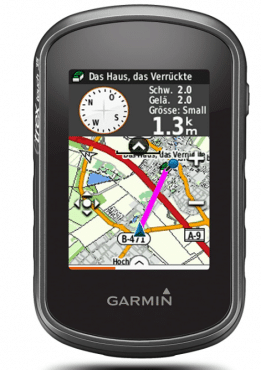
There is no doubt you can employ your phone to use the compass to find the needed way. Moreover, for the majority of common men, it can be easy to use the phone compass instead of the complicated schemes of the usual compasses. Commander Compass Go is a versatile app that will help you to get out of any situation with its simple yet extremely useful interface.
Its key features are the availability of the offline mode, compatibility with the surface maps in a conventional compass mode, gyrocompass for finding true north, speedometer, and altimeter. Another handy feature here is the possibility to leave marks on the map in order to leave checkpoints and to find the way back. Working just like a GPS receiver, the app will tell you the estimated time and distance to your destination along with the speed and possible obstacles. Finally, there is a star map available to those who prefer this type of navigation or who would just like to try stargazing.
The only drawback of such compasses is that it is better not to rely on them in survival conditions as they may go out of battery and you risk being left alone somewhere in the trees. Nevertheless, it is still better to have the compass app downloaded in case some unexpected emergency happens.
As you can see, there is a great variety of worthy compasses that you may use for a myriad of purposes. Remember to pay attention to the exact aim of acquiring a compass and the value you are ready to pay. Below, we will tell you how to correctly use the compass and how to get your perfect one.
Using Compasses
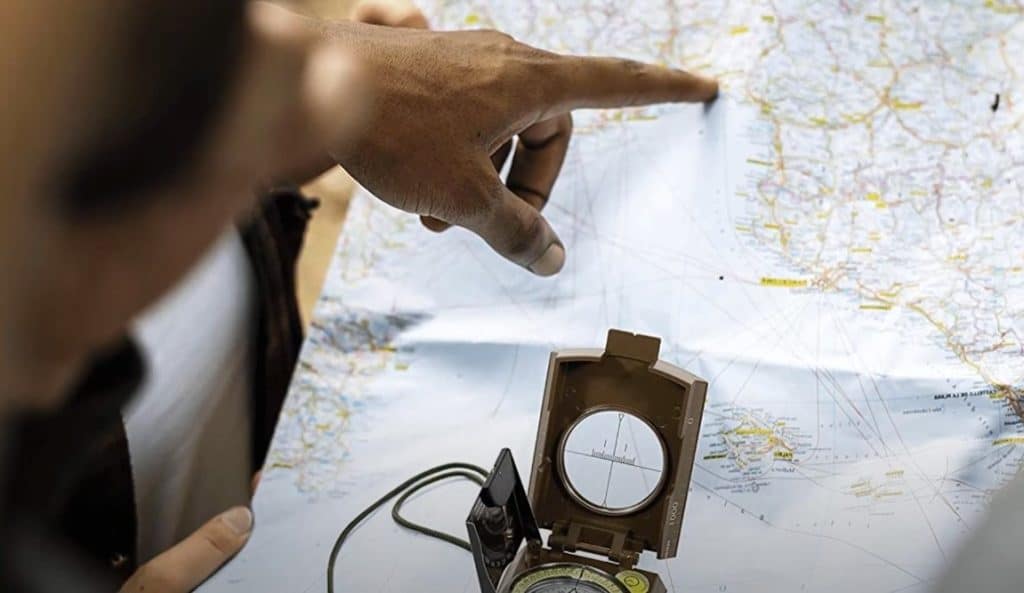
It is likely that everyone has seen a compass at least once in their lifetimes, however, even if you were lucky enough to learn how to use it, you still may not know all the perks and hacks about its functioning. Hence, we are here to tell you what are the mechanisms of how the compass is working and what is the best way to use it.
Basically, the compass is a tool that points with a magnetic needle at a magnetic north by using the magnetic poles of the Earth. Note that magnetic north is not the same as the true one which is depicted on the maps since it uses the upper Hudson Bay area which is slightly moving annually. However, some compasses may indicate both magnetic and true north, so pay attention to these characteristics when choosing your compass. The declination adjustment is one of the key features of many compasses as it exactly shows the difference between the magnetic and true north which may help you to orient faster.
It is also important not to keep the compass near other magnets as they can knock off the mechanism. Another point to pay attention to before the purchase is whether the compass is designed for one of the northern and southern hemispheres.
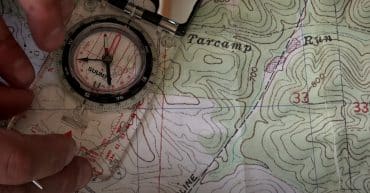
The compass is a great tool for land navigation during hiking, swimming, or simply finding the way in unfamiliar areas. However, it is important to get the correct type of compass for your purposes. For instance, there are special compasses for marine, land-based, sports, and diving navigation. We will discuss the composition of these types below.
Let’s see how it is recommended to read the compass:
- Consider the needed direction with your map or otherwise remember what is the side of the world where you came from.
- Level the baseplate and hold the compass straight upon the map to find the magnetic declination of your position.
- Find the true north using the built-in adjustment or calculate it by yourself.
- If your needed direction is north, point the red needle to its side, otherwise, align the north with the global needle and follow your direction.
Following these easy instructions, you can use the compass to get in any direction you want. However, do not forget to check that your compass’ magnetic needle is set correctly.
Lensatic and Baseplate Compasses
As mentioned, there exist several types of compasses, the most widespread of which are baseplate and lensatic ones. But what is the difference between them? Let’s see the particles of these two types to find out.
A baseplate compass is likely to be used for any activities as it is easy to navigate with it and does not require additional tools to measure the degrees and distance since it has additional scales on its surface. However, it is usually less accurate and durable. Its construction includes:
- orienting lines showing the real north on the map;
- transparent base plate that lets you see the map;
- index line fixing the destination point or the side of the world;
- orienting arrow showing the north on the grid;
- declination scale showing the difference between the magnetic and true north;
- magnetic variation for calculating the declination.
Lensatic compasses are more complicated to use, especially for beginners since they do not imply declination adjustment, however, they are more accurate and durable. They consist of:
- bezel – the central part of the compasses that hold the needle and clicks when it moves by three degrees;
- sighting wire aligns with the sighting slot to get you the azimuth;
- index line used to read the azimuth;
- a magnifying lens that zooms in the scale and the needle;
- dial that depicts the needed direction using the magnetic north.
Best Compass Buyer’s Guide

As you have already noticed, there are many niceties that need to be considered while choosing the particular compass to be used further. For this reason, we created a guide on what to determine before buying a compass with some useful tips and required characteristics.
1. Purpose
Depending on your purpose, the choice of the compass may vary dramatically. For instance, if you want to go hiking, it is better to choose a baseplate compass with a transparent base in order to be able to read the map and have the built-in declination adjustment. If you are aiming at orienting while running or biking, use a thumb compass which is easily carried on your thumb without calling for additional attention or causing extra weight. For diving and marine use, employ a compass with a floating map and a constant needle.
2. Durability
It is highly recommended to choose sturdy compasses as there are so many occasions on which your compass may get damaged or broken since almost all situations requiring one are survival situations or highly active. Do not forget that durability is the required characteristic not only for the base of the compass but for the mechanism itself. If it can be broken because of a minor magnet, it is definitely not a compass you may need.
3. Size and Weight
For comfortable usage, you may need a compass that is lightweight and compact unless you want to place it on a stable surface in your vessel or vehicle. Therefore, this is a highly required point to think of. Just put a compass in your hand or on the map to understand whether it is light and transparent enough. You may also consider how you will store your compass in advance.
4. Features
There are many essential features that a compass has that you might want to use. First of all, the scales that may help you while determining the distance on the map. Orienting lines can also vary depending on a particular model of a compass and you may need the exact ones. Secondly, the luminous particles or the presence of a built-in flashlight are highly useful in the dark. Finally, there are professional features like a clinometer that measures the slope of the terrain, the declination adjustment that shows the difference between the real and magnetic north, and a sighting mirror for more comfortable usage of the map. However, these are not necessary for all cases.
5. Availability on the Market
Lastly, we recommend you revise the land-based shops first in order to be able to try a compass in your hands. It will prevent the possibility of a compass being too heavy or uncomfortable, so you will not be disappointed in the end.
All in all, we hope you found all the essential information about compasses here and now you are able to use and know how to choose them. Always remember that there are always many products but only several producers make ones that are indeed reliable and easy to employ.
Frequently Asked Questions — FAQ
What is the Most Accurate Compass?
Relying on many ratings, Suunto compasses are believed to be the most accurate and durable. For instance, the MC-2 is the most popular model on Amazon and is believed to be suitable for many purposes and users. This is indeed a compass that will last for a long time and will not misguide you in any conditions.
What is a Quality Compass?
For your compass to be considered a high-quality one, it might be sturdy, durable, and precise. It also should have all the needed key features that will help you to easily find the needed direction without any discomfort.
Do I Need a Compass for Hiking?
Surely, yes! The chance that you may lose your initial direction while hiking is increasingly high, so it is better to take care of your life in advance and take your compass with you. Note that it is better to use a baseplate compass for hiking and other activities since it is easier to operate.
Are Cheap Compasses Accurate?
Basically, cheap compasses are pretty good as there exist many good value options. However, while choosing the best compass, you should pay attention to the quality of the materials used, especially for the needle as it is the main part of any tool.
What Compass Does the Military Use?
Cammenga is considered to be the most popular compass overall since it is used by the US army and many Americans know how to employ it. It is famous for its appearance, weight (7 ounces!), and precision, so if you are not afraid of carrying such a big tool, it is a reliable choice.
How Does the Baseplate Compass Work?
Any compass helps you to get to your destination with the help of a magnetic global needle and magnetic poles of the Earth. A baseplate compass is popular because it has a user-friendly “interface” with depicted directions and other features that will not make you puzzled.

